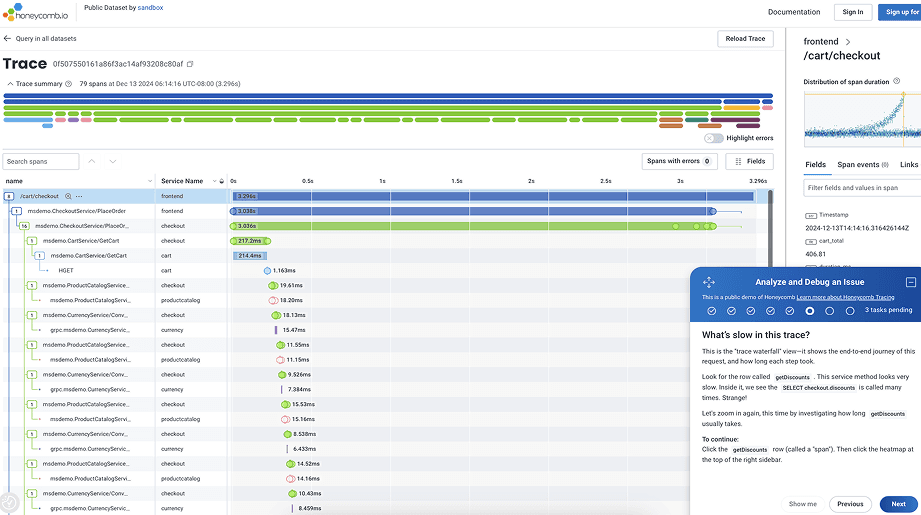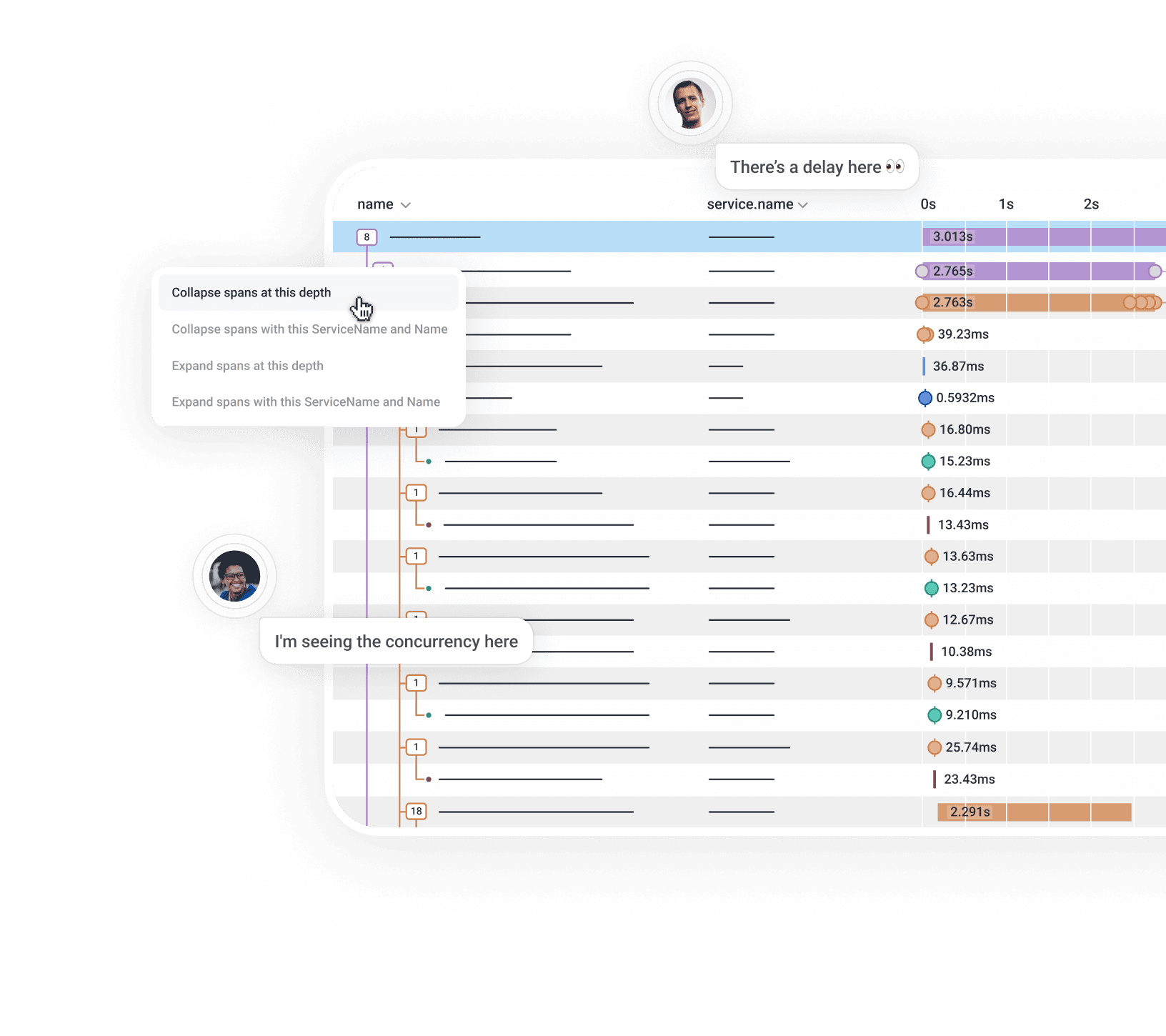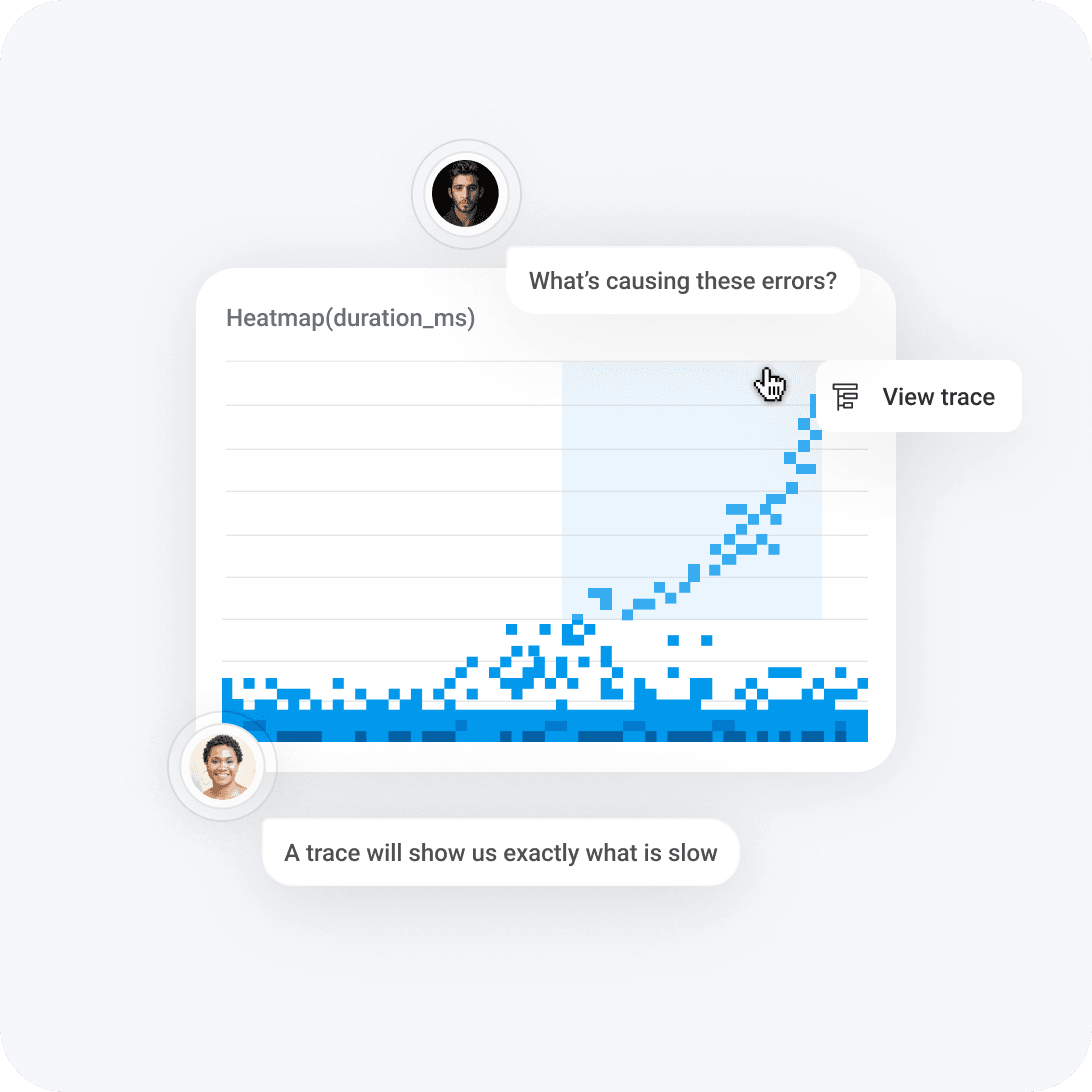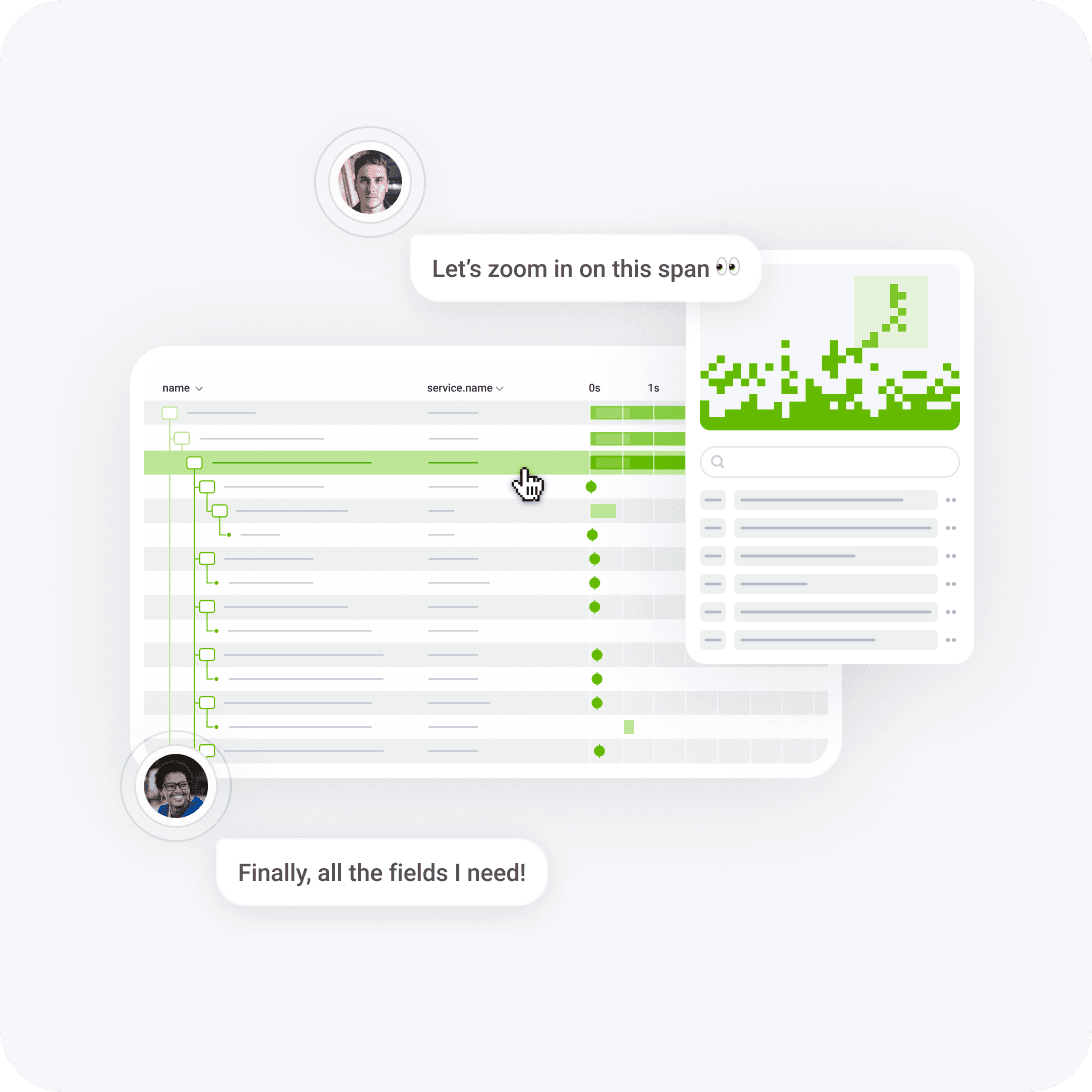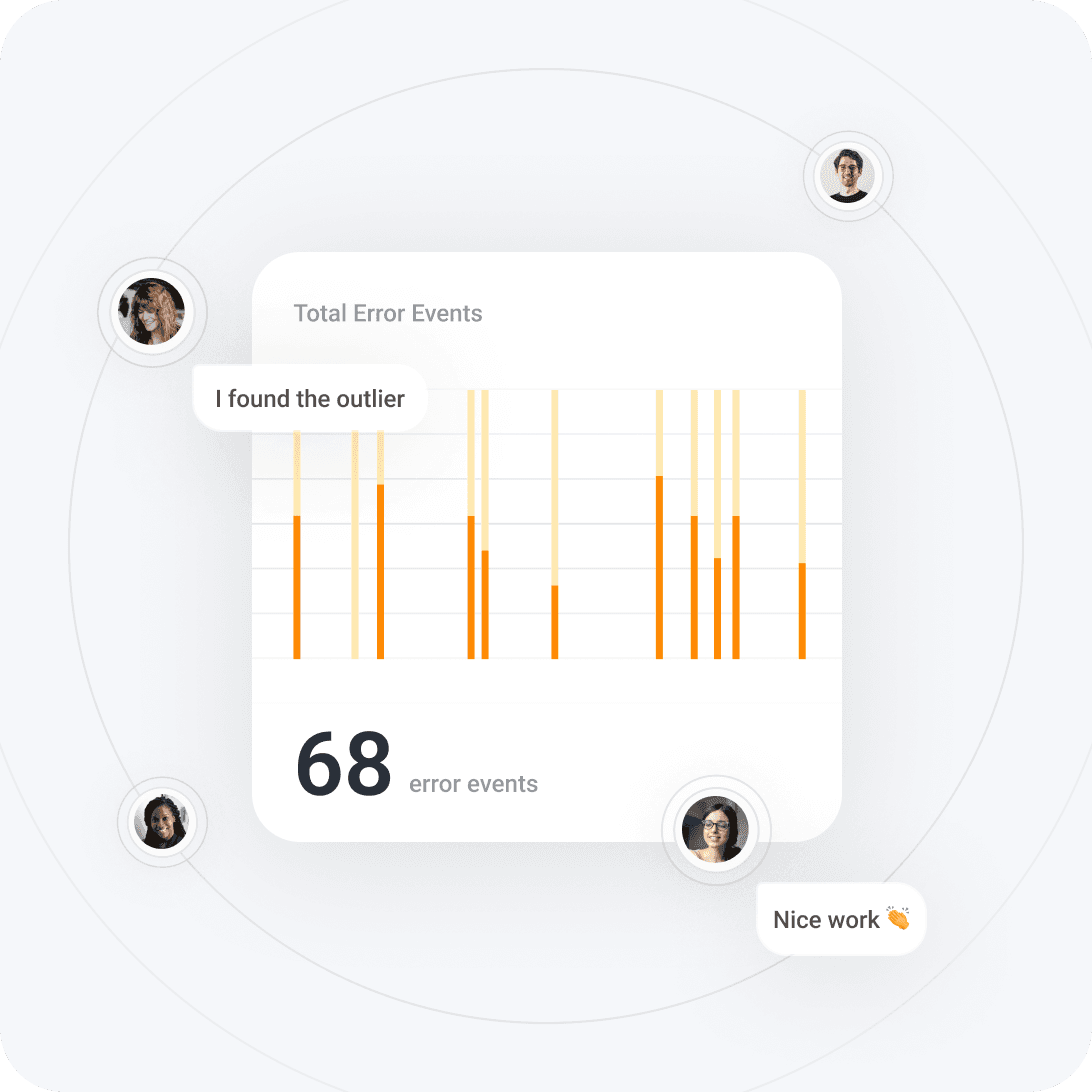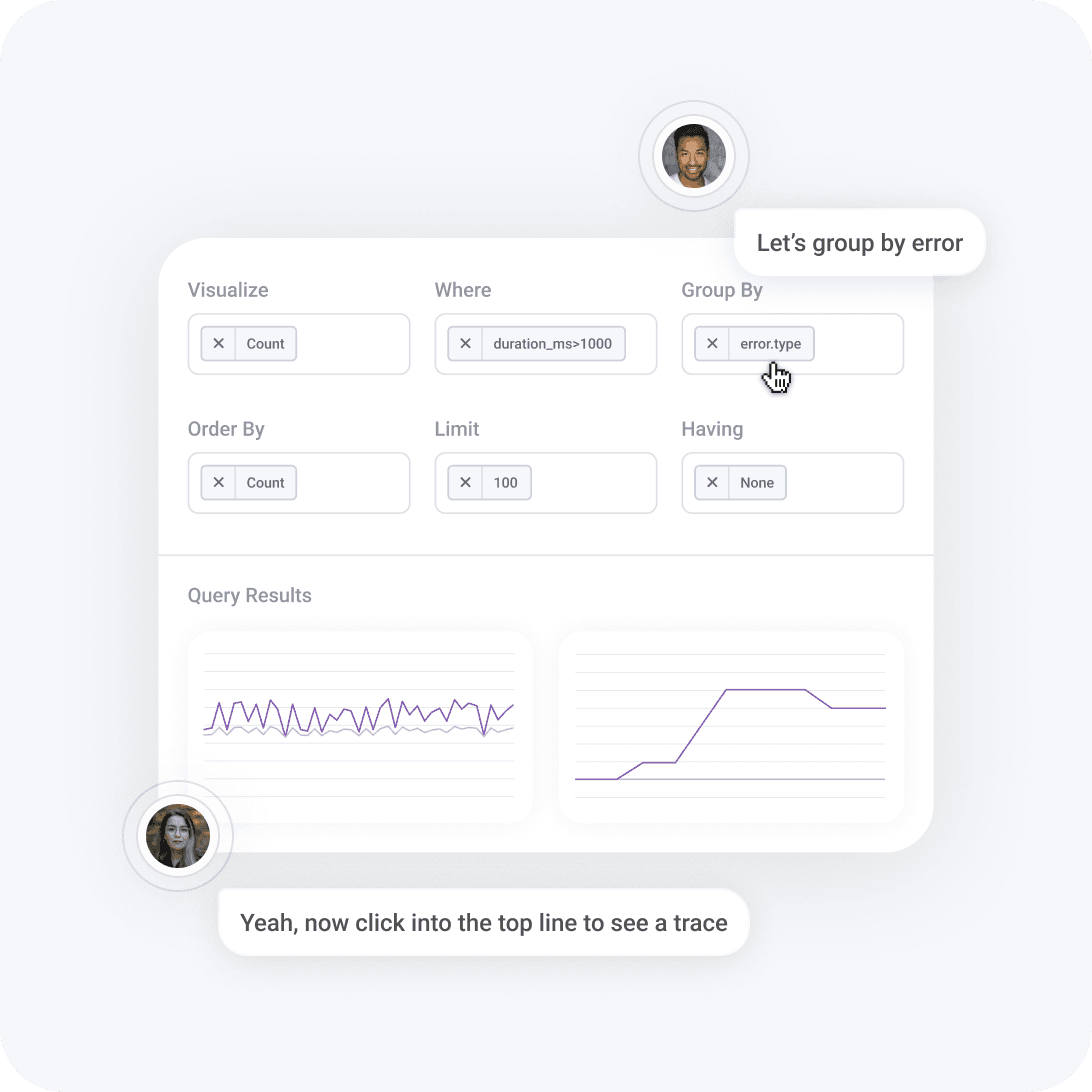Rapid debugging with distributed tracing
Connect all your context within one tracing view for faster, clearer insights.
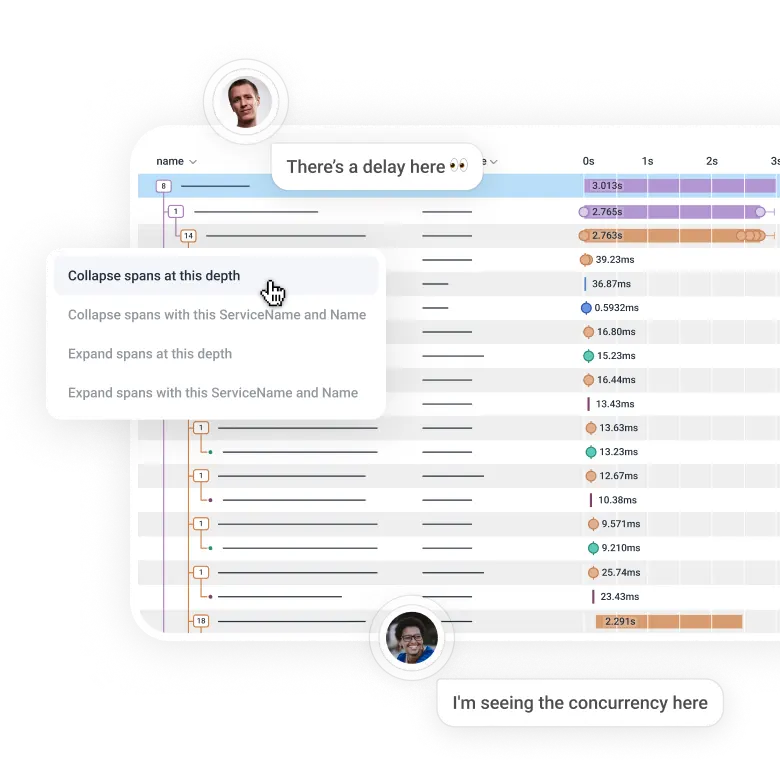
Why you’ll love Honeycomb
See the whole picture
Display the full story of request processing, across all services in your stack.
Find issues faster
Immediately go to the source of each error. Glance at the waterfall view and know which service is causing slow response times.
Trace as a team
Every team is looking at the same trace view. See what your service did, who called it, and how each dependency responded. No more 'your logs vs. my logs.'
See how it works
Watch a demo or try it for yourself in our sandbox—no registration required.
Why choose Honeycomb distributed tracing?
Find the trace you need
Filter by any field, or click on any spot in any graph, to get to the associated trace. Get directly to the trace that actually matters, quickly.
Delve into the details
Look under the hood of any trace span. See every field and every log statement, and better understand the interconnections between services. Zoom in for details, zoom out for the big picture.
Minimize single points of failure
Let your software teach you how it works. From experts to new team members, everyone can learn from what really happens in production.
Every field is a custom metric
Query and graph over anything in your trace spans. How many calls are made to this database, and which request URL triggered them? Filter on error message and region, then find the customer IDs seeing the highest latency.
Honeycomb’s distributed tracing has massive advantages over metrics and other monitoring tools. The transactions are encoded with deep information resulting in multiple visualizations that you can seamlessly switch between to get alternative perspectives on the problem and hone in on the patterns.

Kesha Mykhailov
Senior Product Engineer, Intercom
Related features
Spans with lots of useful fields + Honeycomb’s unparalleled speed = incredibly powerful experiences built on your data.
Give it a try in our sandbox
See how Honeycomb distributed tracing gives you fast, actionable answers about end user experience.

